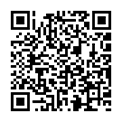 |
編目園地推出LINE服務囉! 歡迎掃描QR Code立即加入編目園地的LINE@帳號, 每月編目園地的更新內容、國內外資訊組織報導等訊息將一次提供給您! |
-
技術規範訊息
-
教授 New RDA Toolkit 的 6 項祕訣
-
RDA Lab Series 講師 Kate James(同時也是 RDA in practice : a workbook 一書著者)對於教導或學習 New RDA Toolkit 的建議,提出了以下 6 項提示,包括:
1. 在講解 RDA 內容前先介紹 Toolkit;
2. 從熟悉的部分開始;
3. 使用詞彙:RDA 的詞彙編碼表(vocabulary encoding scheme)不僅採用控制詞彙的概念,也含括權威檔及資料庫內的識別碼;
4. 解說 LRM,但是不要過度;
5. 說明新的 RDA 被設計為如何使用;
6. 不要忽略名稱(Nomen)實體:該實體是所有 RDA 實體中最抽象的實體,且不為非鏈結開放資料之機構所實施,然而該實體卻是編目上對於同一著者不同類型作品之名稱問題的解決之道。
Kate James 有關教導 New RDA Toolkit 的 6 項提醒,對於國內未來 New RDA Toolkit 之教學與訓練,也提供了很好的參考與借鏡,期能提高國內有關 New RDA Toolkit 的學習成效。
-
RDA 指導委員會 (RSC) 公布 2021-2023 年的行動綱領
-
RDA 指導委員會宣布下一個 RSC 非同步會議 (RSC asynchronous meeting) 將於 四月12日-15日間召開,並公布了會議議程,與會者以委員會成員及全球的地區代表為主。
會議公告上,還特別提及"RSC 2021-2023 年的行動綱領"已經公布在網上。未來三年主要的方向是:
- 將 RDA 發展成為一個有彈性並符合各方需求的標準
- 提高 RDA 被採用的機會
- 提供適當的管理機制
常務性的工作主要包含:
- 確保 RDA 的發展遵行基本的目標: 回應使用者需求,符合成本效益,有彈性,前後一致及國際化。
- 提供國際化的例子和指導準則,每年提報國際化的進度。
- 每個 RDA Toolkit 更新提供更多的更新內容
- 隨時回應使用者的回饋
- 增加或調整使用舉例
- 針對翻譯,編目政策更新,或者 Registry 網站內容更新加強更細緻化的管控。
- 更新 RSC 操作文見並隨需要新增作業文件
- 提供更多 RDA 入門指導及教育訓練
- 把握機會介紹給更多的潛在使用社群
-
RDA Registry 發佈 建議避免採用的元素清單
-
根據原始 RDA Registry 的解釋,清單中有些元素的記述方式與其他的元素重複;有些元素則僅是其他元素的細分,應該避免過於繁瑣;這些元素雖然在目前的版本裡還是可以使用,但是未來很可能面臨修正或者被棄用。
這份清單提醒決定採用RDA的圖書館先避免採用這些元素,以免往後可能得面臨書目資料轉換的麻煩。
清單以 CSV 的格式列出"建議避用元素編號","元素標籤","建議使用元素編號",及其"元素標籤"等四個欄位,共九十餘條。清單請見原始網頁鏈結。
-
-
編目園地快報
-
更新國家圖書館學位論文相關代碼表
-
更新 國家圖書館學位論文學校及系所(新增1校;修改1校)
新增 國家圖書館學位論文系所名稱或代碼新增、修訂一覽表(110年03月)
-
-
資訊組織文獻
-
Missing the MARC: Utilization of MARC Fields in the Search Process
-
Utah State University Cataloging and Metadata Services (CMS) unit analyzed MARC record discoverability within the libraries’ discovery layer, Encore, using web analytics, a web-scrapping tool, and a relational database to examine MARC records listed in users’ search results. MARC records were identified, isolated, and coded to pinpoint where search terms appeared, determine whether they were present in full or in part, and ascertain prominent fields not present in records. Analysis of results showed that notes and summaries were important for record retrieval and that users interacted with authorized name fields more frequently than authorized subject fields.
-
Authority Control Today: Principles, Practices, and Trends
-
Authority control enhances the accessibility of library resources by controlling the choice and form of access points, improving users’ ability to efficiently find the works most relevant to their information search. While authority control and the technologies that support its implementation continue to evolve, the underlying principles and purposes remain the same. Written primarily for a new generation of librarians, this paper illuminates the importance of authority control in cataloging and library database management, discusses its history, describes current practices, and introduces readers to trends and issues in the field, including future applications beyond the library catalog.
-
Cataloging Children's Materials: Issues and Solutions
-
Library catalogs remain challenging for children to use, especially because children have difficulty with multi-step processes, have less semantic and technical knowledge, and often search differently from adults. Child-friendly catalogs should have clear, simple protocols and visual guides that are standardized yet include flexible options for differentiated manipulation. Materials should be described accurately and in ways that connect meaningfully to children. More fundamentally, cataloging children’s materials needs to be done in light of children as potential users and limitations of the integrated library management system itself. Getting children’s feedback in the process can optimize the results.
-
Library Classification Systems in the U.S.: Basic Ideas and Examples
-
This article offers a basic introduction to classification in the context of librarianship in the United States with an aim toward filling gaps in formal education and practical experience. The article defines the concept of classification and discusses the goals and purposes of classification, both functional and intellectual. Overviews of two common classification systems frequently used in U.S. libraries are presented: Dewey Decimal Classification (DDC), Library of Congress Classification (LCC), as well as an introduction to a group of classifications known as “reader-interest classifications.”
-
國家圖書館編目園地電子報 第241期 2021/04/01發行
編輯:國家圖書館館藏發展及書目管理組
創刊日期:2001/4/2
本報著作權屬「國家圖書館」所有
服務信箱:catadm@ncl.edu.tw